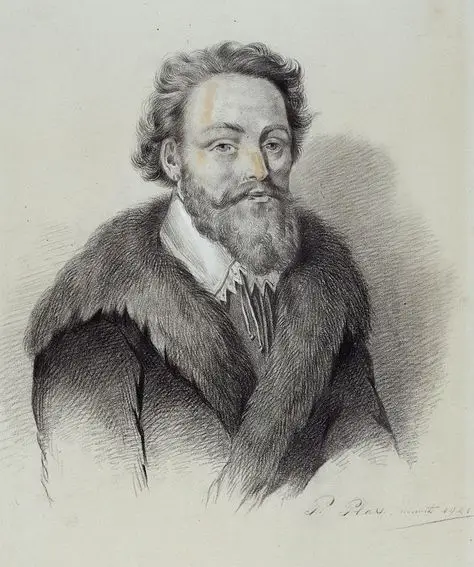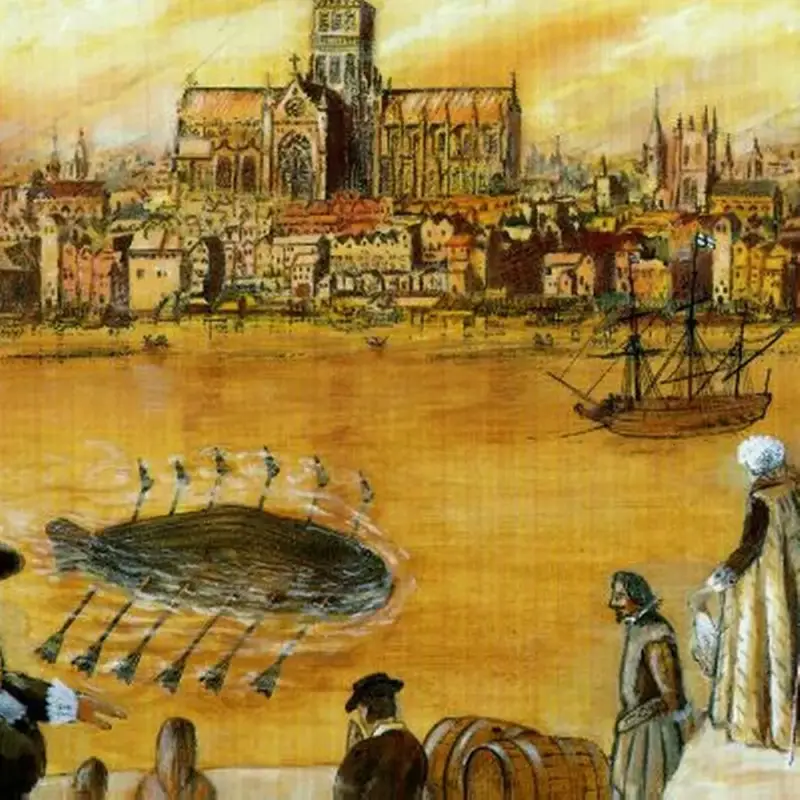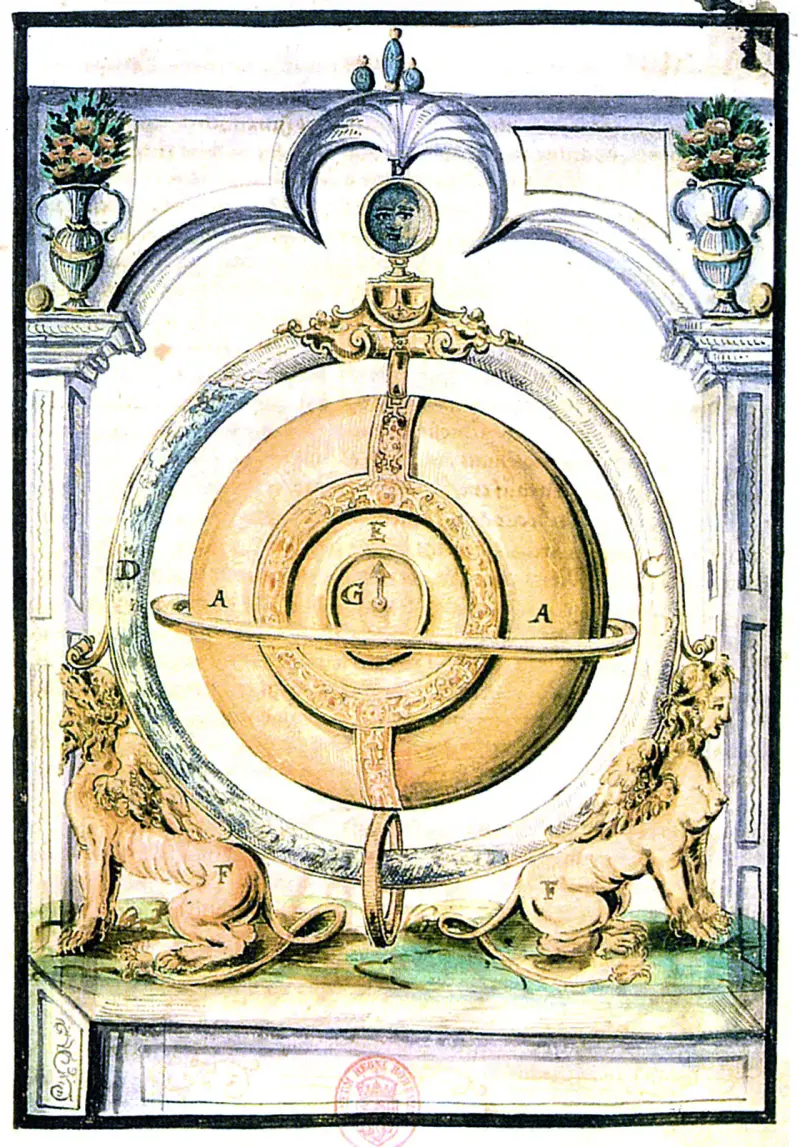A submarine and a dozen more inventions from one person

Cornelius Drebbel
Wooden submarine, incubator, perpetual motion machine, microscope and much more. Cornelius was a versatile person who gave impetus to the development of science in different directions.
Drebbel's life
Cornelius was born in 1572 into the family of an Anabaptist and wealthy farmer Jacobs Drebbel. The family lived in Alkmaar. Although the parents were wealthy, they did not give their son a good education. He attended a Latin school, where he acquired his primary education. At the age of 15 he moved to Haarlem, where he entered the Academy and studied to become an engraver. Thanks to his teachers and perseverance, he masters art well, and at the age of 20, the Dutch artist Hendrik Goltzius takes him as his apprentice. Drebbel loved to study, to learn new things, so at a young age he discovered a craving for alchemy and physics, which gave impetus to future inventions.
At the age of 25, he marries his mentor's younger sister Sophia, and the newlyweds move to Alkmaar. His wife lived large, so Cornelius had to work a lot. He managed to be an engraver, a cartographer, and an artist.
At the same time, the young man begins to invent, and in 1598, at the age of 26, he received two patents - for a water supply system and for a clock with a “perpetual” motion machine. Two years later, Drebbel has the opportunity to bring his invention to life - in the town of Middelburg, he builds a fountain and a sewer system through which fresh water is delivered. There, Cornelius learns how to grind lenses.
Drebbel moved to London with his wife and daughters in 1604. There the inventor gained the favor of King James and Prince Henry. The Drebbel family often took part in masquerades, some of which were in their honor. There Cornelius finally shows the world his watch.
Drebbel is famous, many monarchs invite him, but he and his family move to Prague. He lived well there for only one year while Emperor Rudolf II was in power. Cornelius is made chief alchemist. After the emperor is overthrown, Drebbel, as his supporter, goes to prison for a year. And in 1613 he returned to London. Here he is working on a submarine.
But six years later he left for Prague again at the invitation of another emperor, Ferdinand II. But he is captured after the Battle of White Mountain, again loses everything he has acquired and returns to London, where he gains even greater fame thanks to submarines.
And from the 1620s until his death in 1633, Drebbel lived with his family in London, working with microscopes, making theatrical props, and unsuccessfully trying to create torpedoes, sea mines and explosives. He even had plans to build a theater in London, but it didn’t work out.
For the last few years he has been living in poverty, running a small inn and draining the swamps in Cambridge. The entire small fortune of the great inventor, who was revered by monarchs of different countries, was divided by his four daughters.
Submarine
Cornelius Drebbel became famous for his invention of the submarine. Unfortunately, the original drawing has not survived, but we roughly know how the boat works. In 1621, Drebbel demonstrated his invention to the royal court and residents of London.
This submarine was an improvement on the first two he had invented in 1620. She could, unlike previous versions, dive up to five meters and stay under water for up to three hours. Even King James I dived in the boat. This is the first monarch to dive. The inventor and his team sailed from Westminster to Greenwich and back. The total route is about 20 km.

Submarine demonstration in London
According to paintings and verbal descriptions that have come down to us, the latest version of the submarine had 12 oars (the previous ones had six). The air probably passed through long pipes that reached the surface. The inventor also obtained oxygen by heating nitrate. Drebbel was a good alchemist, so he used this method.
The hull of the boat was made of wood, covered with waterproof oiled leather. It was also used to seal the holes for the oars. The underwater vessel could accommodate up to 16 people.
Other inventions
The submarine is not the only invention of Cornelius that has helped humanity. For example, at a young age he patented a “perpetual motion” clock, which he showed to James I nine years later. It worked on pressure differences. Inside he placed a thermoscope with a liquid, the level of which changed with changes in pressure or temperature. These two parameters, albeit sometimes slightly, change throughout the day. Due to these minute changes, the float, which was on the surface of the liquid, oscillated and affected the clock drive, causing the hands to move. The watch also showed the lunar phase and date. Unfortunately, the drawing has not survived.

Clock with a “perpetual” motion machine
Cornelius Drebbel can also be called the founder of automation. He used his perpetual motion machine in chicken incubators. As the temperature increased, the air expanded, the mercury in the thermostat rose, affecting the mechanism that closed the damper. When the temperature cooled down, the damper opened. In such an incubator, Drebbel's chicks and ducklings hatched without human intervention.
Drebbel also invented a microscope with two convex lenses, and improved the telescope of Johannes Kepler's version. The Dutchman designed a camera obscura with a lens and a lens grinding machine.
Drebbel was also the first to obtain oxygen from the combustion of nitrate, and this method is still used today. He also learned to oxidize sulfur to produce sulfuric acid.
In addition, the scientist was able to cause lightning and thunder in laboratory conditions, created the first model of a planetarium, developed a sewer system with fresh water supply in Middelburg, drained swamps near Cambridge, and invented an air conditioning system.
Information